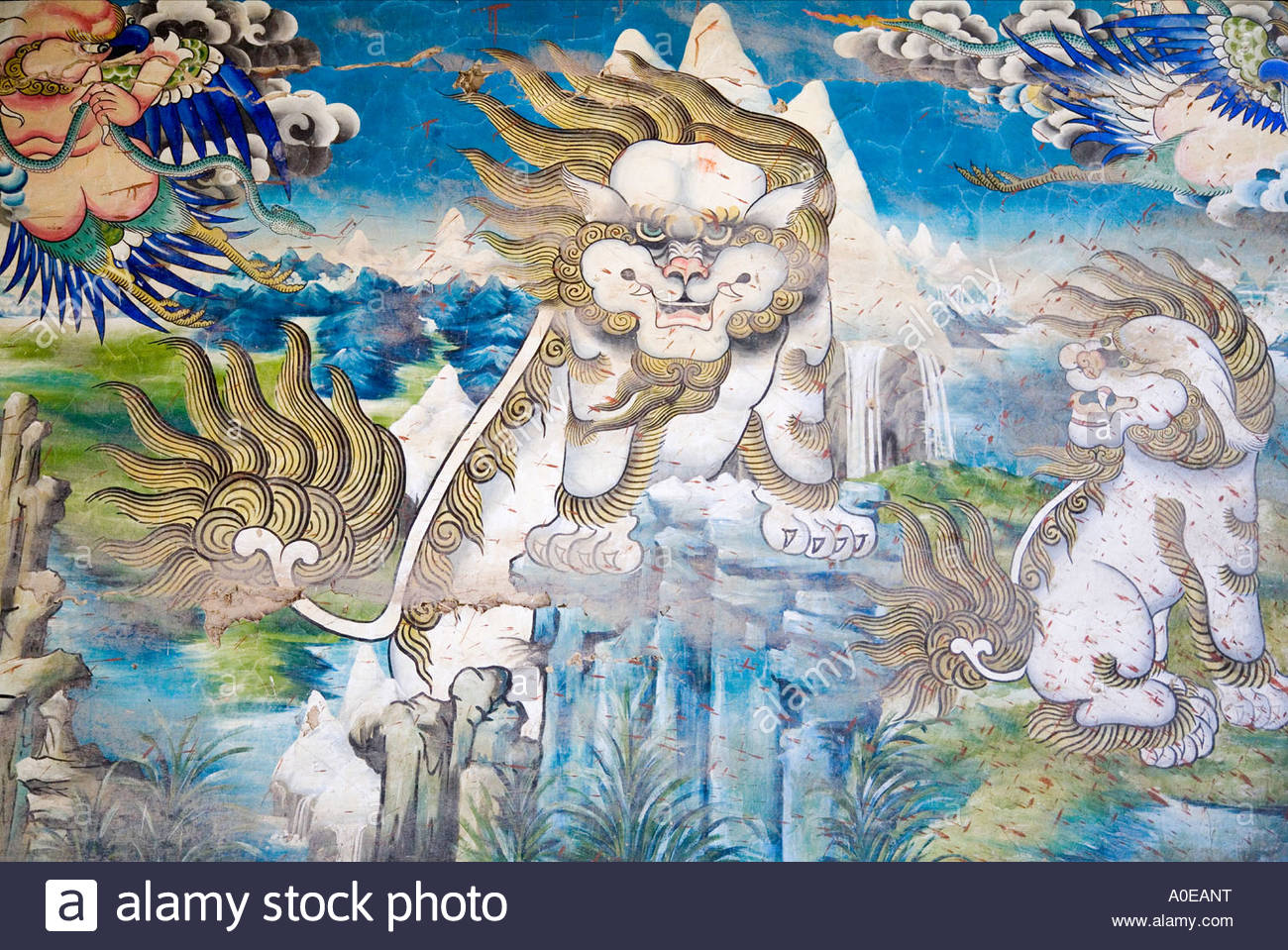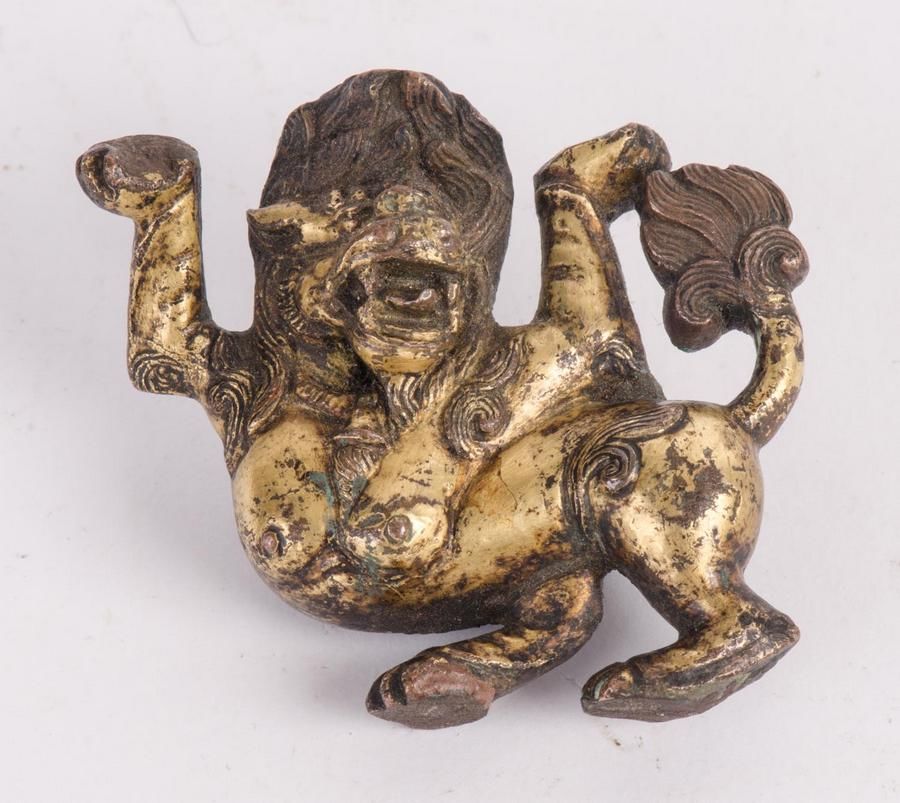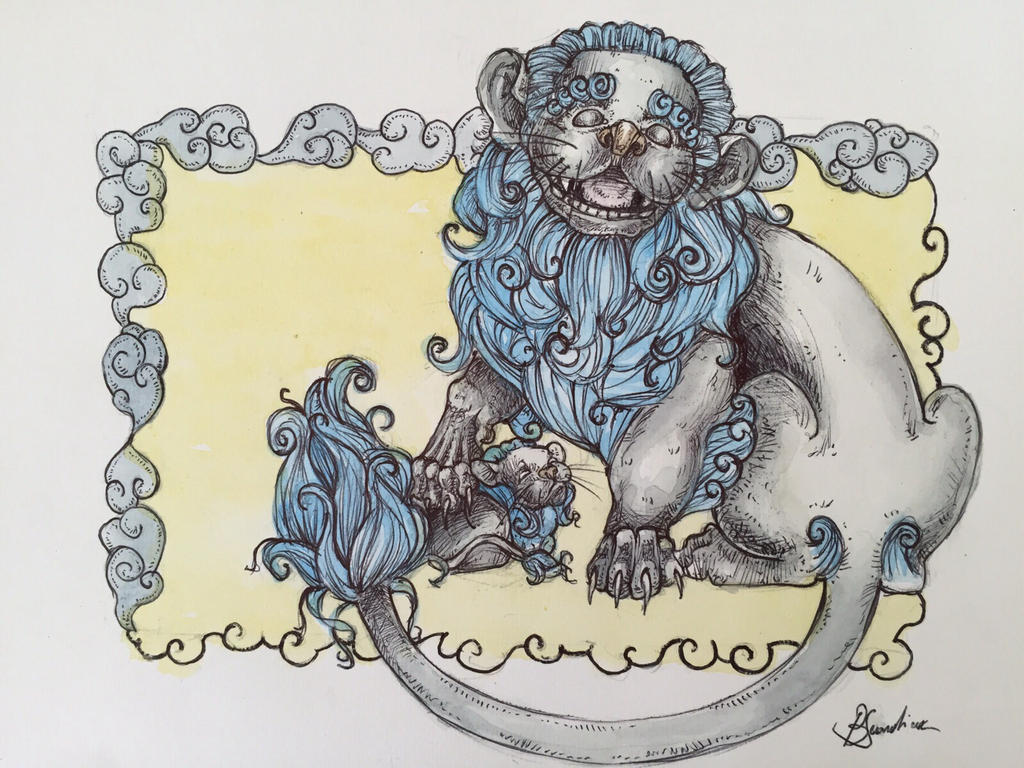
Snow Lion by shelzie on deviantART Snow lion, Tibet art, Buddha art
The Snow Lion symbolizes fearlessness and is often depicted in Tibetan Buddhist art on the thrones of the Buddha and is seen ridden by certain Dharma Protectors, spirits that protect the Buddhist tradition.

Sculpture is a Tibetan snow lion, huge white head, open mouth, emerald mane Stock Photo Alamy
The Snow Lion is the national emblem of Tibet. The Snow Lion resides in the East and represents unconditional cheerfulness, a mind freed from doubt, clear and precise. It has a beauty and dignity resulting from a synchronized body and mind. The Snow Lion has the youthful, vibrant energy of goodness and a natural sense of delight.

Tibetan snow lion hires stock photography and images Alamy
The Snow Lion - or 'Gangs Seng Ge' in Tibetan, is a powerful celestial animal that resides in the eastern Himalayas. Protector of Buddha, it personifies fearlessness and a cheerful mind. For more than a century it has remained the national emblem of Tibet.
kriya kalash Tibetan Snow Lion
The snow lion is originally a mythological, Buddhist good luck symbol. It has been the official symbol for Tibet since 1909. This article is a short, illustrated wrap-up about the Tibetan snow lion and shows a video of a snow lion dance performed by Tibetan monks in exile.

Pin on Fantastical Creatures
The snow lion's depiction in ancient Tibetan art and artifacts reveals its great spiritual significance. Its likeness graces Tibetan paintings, furniture, architectural details, textiles, and more. Myths and legends tell tales of the snow lion's special powers and precious milk. From festive ceremonial dances to official state symbols, the.

Tibetan Buddhist Pair of Temple Snow Lions
The Snow Lion, sometimes also Snowlion, ( Tibetan: གངས་སེང་གེ་, Wylie: gangs seng ge; Chinese: 瑞獅; pinyin: ruìshī) is a celestial animal of Tibet. It symbolizes fearlessness, unconditional cheerfulness, east and the earth element. It is one of the Four Dignities.

How did the snow lion the symbol of Tibet? azibaza's blog
The Snow Lion is also known as Gang Seng Ge, Xhiu Shi or Rui Shi. Powers and Abilities In Tibetan folklore, the milk of the Snow Lion is thought to harbor nutrients that contribute to enhancing the body's balance and well-being.

A 16th 17th Century Tibetan Gilt Repousse Head of a Snow Lion at 1stdibs
The snow lion is originally a mythological, Buddhist good luck symbol. It has been the official symbol for Tibet since 1909. This article is a short, illustrated wrap-up about the Tibetan snow lion and shows a video of a snow lion dance performed by Tibetan monks in exile. The snow lion stands for fearlessness and a cheerful mind.

Snow Lion by Tim Gainey in 2020 Snow lion, Tibet art, Lion images
In Tibetan folklore, the Snow Lion is a mythical animal that resides in the Eastern Himalayas. The Snow Lion has a youthful, vibrant energy and a natural sense of delight. Its fur is pure white and its flowing mane is the color of Tibetan turquoise. The Snow Lion symbolizes fearlessness and victory over all obstacles .

16th/17th Century Tibetan Snow Lion Gilt Bronze Figurine Bronze Oriental
The Snow Lion served Tibetan and Indian cuisine, and was owned and operated by Jigme Norbu, the nephew of the Dalai Lama of Tibet.. The Snow Lion was known for their rich and exotic dishes, as well as for holding their recipes highly secret. Only a small amount of the food is authentic - the dishes are lacking in Yak meat and milk - the dishes are exotic and Americanized at the same time.

Talking With Tors Is Consciousness Everywhere?
In Tibetan folklore, the Snow Lion is a mythical animal that resides in the Eastern Himalayas. The Snow Lion has a youthful, vibrant energy and a natural sense of delight. Its fur is pure white and its flowing mane is the color of Tibetan turquoise. The Snow Lion symbolizes fearlessness and victory over all obstacles.

Tibetan snow lion !8th Century a quintessential symbol of Tibetan culture. The Gina
Yet a lion, especially a snow lion has become the mascot of Tibetan culture and resistance. How did this happen?. Tibet has tigers and leopards but no lions. Yet a lion, especially a snow lion.

kriya kalash Tibetan Snow Lion Snow lion, Tibetan art, Japanese dragon tattoos
Did they have a message for you? Note: This feature is slightly whimsical, sorry! Couldn't help it! The Four Dignities in Tibetan Buddhism and the auspicious animals of Bhutan: Tiger (Vraghra in Sanskrit) lower left Snow Lion (Seng) lower right, Garuda upper left and Dragon (Vritra, Skrt or Druk) upper right.

Snow Lion, Tibet Gilt & Painted Copper 18th Century. Lion sculpture, Sculpture, Snow lion
The Snow Lion is a celestial animal of Tibet. It is the emblem of Tibet, representing the snowy mountain ranges and glaciers of Tibet, and may also symbolize power and strength, and fearlessness and joy, east and the earth element. It is one of the Four Dignities.

Tibetan snow lion by PersoncinaSimpatica on DeviantArt
In Tibetan culture, the snow lion is the mount for various Vajra deities, including Vaishravana, Manjushri, Ganesha, and the goddess of longevity. Due to their protective symbolism, snow lions are commonly depicted on both sides of temple gate entrances or carved on building eaves. Snow lions appear to embody patron saints.

Image result for Snow Lion Tibetan art, Snow lion, Shishi
The Snow lion dance or Seng-geh Gar-cham ( Senggey Garcham ) of Tibet is a very symbolic dance art form. According to Buddhist beliefs, snow lions are consid.